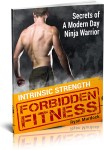Tension headaches are a very common anxiety symptom and for some they can be very scary.
For those of you with health anxiety these headaches can be of concern when your mind tries to convince you that they are a symptom of a more serious illness such as a stroke, brain cancer or brain aneurysm .
it is important to know that stress is actually the number one reason for headaches. As we with anxiety issues are under tremendous amounts of stress almost throughout the day it is no wonder that so many of us suffer from all kind of headaches.
A tension headache is most commonly described as a dull pain that causes pressure in your head which can affect a very specific are of the head such the back of your head or behind the eyes or be a very general pain. Some describe as if your head is being squeezed tightly or that you have a tight band around the head.
in this video I am going to explain the connection between stress and these dreadful tension headaches.
Interested to chat in a more private setting? I have set up a Patreon page with what I believe to be great benefits. Just check it out and maybe it is something you might be interested in.
https://www.patreon.com/improvementpath
Did you enjoy the video? Yes? A like would be awesome and if you want to see more videos just like this one – consider subscribing!
ALSO
The 5 books below are some amazing reads and I am 100% confident saying that they will help improve your mindset and ultimately help you on your road to recovery! So, if you are looking for books that I truly believe will help anyone with anxiety issues… these 5 are it!
I am not sure if I am obliged to write this here on YouTube, but if you do end up purchasing one of these books via the links below, I will get a tiny commission – BUT that’s not the reason I have posted them here.
These are simply AWESOME books that will help!
1. Can’t hurt me – David Goggins ( https://amzn.to/3hIgPML )
2. Breath – James Nestor ( https://amzn.to/3lxHQVn )
3. Dare – Barry McDonagh ( https://amzn.to/2EGyK7Z )
4. Norman Doidge – 12 Rules for Life ( https://amzn.to/2Dc0nFi )
5. Unleash the Power Within – Tony Robbins ( https://amzn.to/3bhRFC3 )
MUSIC:
Rhodesia by Twin Musicom is licensed under a Creative Commons Attribution licence (https://creativecommons.org/licenses/by/4.0/)
Artist: http://www.twinmusicom.org/
Tension headaches are the most common type of primary headache disorder seen in practice, and perhaps the most misunderstood. In this video, from our Headaches Masterclass course, you will explore the criteria for diagnosing tension headaches.
Join our Headaches Masterclass course today!
After course completion you will have the knowledge and skills to recognize and categorize primary headaches accurately, outline the warning signs of ominous headaches and those caused by medical conditions, and it teaches you how to help your patient to help themselves by recognizing triggers and adopting lifestyle changes.
⏯Start the Course for FREE now: https://www.medmastery.com/course/headaches-masterclass































































